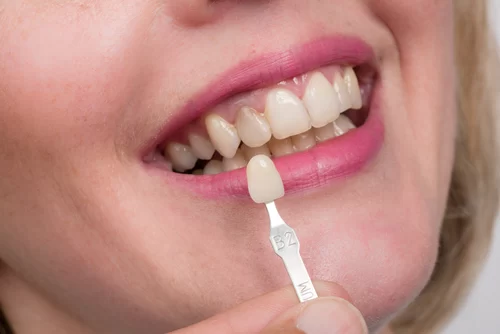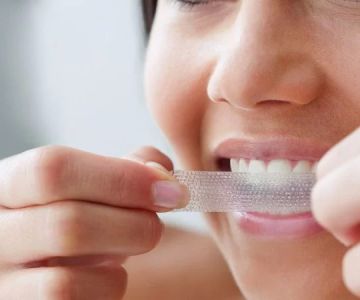
- understanding-causes-of-tooth-pain-after-dental-crown-placement
- dental-crown-procedure-and-what-to-expect
- common-reasons-for-pain-after-dental-crown-placement
- how-to-distinguish-between-normal-sensitivity-and-problematic-pain
- real-life-stories-and-case-studies-of-post-crown-pain
- tips-for-relieving-tooth-pain-after-dental-crown-placement
- when-to-seek-professional-help-and-recommended-services
Understanding the Causes of Tooth Pain After Dental Crown Placement
If you’ve recently had a dental crown placed and are experiencing unexpected tooth pain, you’re not alone. Many people find themselves wondering why their tooth still hurts after getting a crown. While some sensitivity is expected, ongoing or sharp pain can be concerning. This article explores the true causes of tooth pain after dental crown placement, offering insight, real examples, and expert advice to help you understand your symptoms and take action. As someone who’s seen both sides—patients and professionals—I’ll share both the science and the human side of this all-too-common dental issue.
Dental Crown Procedure and What to Expect
Before diving into the reasons for pain, it’s important to understand what happens during dental crown placement. A dental crown is a custom-made cap that covers a damaged or weakened tooth, aiming to restore its function and appearance. Typically, the dentist will remove a portion of your natural tooth, shape it for the crown, and then place a temporary or permanent crown on top. Most people expect some sensitivity after the procedure—after all, your tooth has just gone through a significant transformation. However, knowing what is “normal” helps you distinguish routine healing from a developing problem.
I remember one patient, Sarah, who came to Dentistry Toothtruth feeling anxious after her first crown. She described a dull ache that lasted about a week, but with some gentle care, her tooth soon settled down. Her experience is typical and shows how a bit of patience often pays off.
Common Reasons for Pain After Dental Crown Placement
Tooth pain after dental crown placement can stem from several sources. Understanding these causes is the first step toward relief. Here’s a closer look at the most common reasons:
1. Tooth Nerve Sensitivity
When a tooth is prepared for a crown, some nerve irritation is almost inevitable. This is especially true if the tooth had deep decay or an old filling. The dental drill can cause inflammation in the dental pulp, leading to sensitivity to hot, cold, or pressure. Usually, this subsides within days to a couple of weeks, but it can persist in some cases.
2. Crown Fit and Bite Issues
A poorly fitted crown or one that is too high can cause ongoing pain every time you bite down. Even a tiny misalignment can put pressure on the tooth or surrounding teeth. In my clinical experience, bite adjustments are one of the most common and easiest solutions for post-crown discomfort.
3. Gum Inflammation or Recession
The gum tissue around a newly crowned tooth may become irritated during the procedure. Sometimes, the crown margin sits too close to the gum or even causes a slight injury, resulting in soreness or swelling.
4. Underlying Tooth Infection
Sometimes, pain after a crown indicates a deeper problem. If decay or infection was present in the tooth or roots before the crown was placed, pain can persist or even worsen. In rare cases, a root canal may be necessary, even after crown placement.
5. Temporomandibular Joint (TMJ) Stress
Surprisingly, dental crowns can sometimes cause or worsen jaw pain if they change the way your teeth come together. This can lead to headaches, jaw clicking, or even ear pain.
How to Distinguish Between Normal Sensitivity and Problematic Pain
After your dental crown is placed, some mild sensitivity is to be expected. But how do you know if your pain is normal or a sign of a problem? Normal sensitivity usually fades within days and improves with gentle care—think avoiding extreme temperatures and chewing on the other side. On the other hand, severe, throbbing pain, pain that gets worse over time, or pain accompanied by swelling should never be ignored. If you experience these symptoms, it's wise to seek professional help, as they could indicate infection or crown-related issues.
At Dentistry Toothtruth, we’ve seen patients try to “tough it out,” only for minor problems to become major headaches. Early intervention is always the best strategy.
Real-Life Stories and Case Studies of Post-Crown Pain
Let’s look at a couple of real-world cases that show how tooth pain after dental crown placement can play out.
Take the case of Michael, who experienced sharp pain every time he bit down on his new crown. He put up with it for weeks, assuming it would just go away. Eventually, he visited Dentistry Toothtruth, where a quick bite adjustment brought instant relief. Michael’s story highlights how a small issue—an imperfect bite—can lead to big discomfort, but can also be resolved quickly by a professional.
On the other hand, Linda developed severe pain and swelling a few days after her crown. She was hesitant to return, fearing more dental work. However, an X-ray revealed a lingering infection that needed a root canal. Linda’s experience is a reminder that post-crown pain is sometimes a sign of deeper problems that require prompt attention.
Tips for Relieving Tooth Pain After Dental Crown Placement
If you’re dealing with tooth pain after a dental crown, there are several steps you can try at home while you monitor your symptoms. Avoid very hot or cold foods and try to chew on the opposite side of your mouth. Over-the-counter pain relievers can be helpful for temporary relief, but always use them as directed. Good oral hygiene—gentle brushing and flossing—will keep the area clean and reduce gum irritation.
Some patients find relief with salt water rinses or by using toothpaste designed for sensitive teeth. Remember, while these steps can help, they are not a substitute for professional advice if your pain is severe or persistent. If you’re unsure, consult an expert at Dentistry Toothtruth to get tailored advice for your unique situation.
When to Seek Professional Help and Recommended Services
While mild discomfort can be normal, pain that persists beyond a week, gets worse, or is accompanied by swelling or fever should always be checked by a dentist. Ignoring symptoms can lead to more serious problems, including infection or damage to your crown or tooth.
Dentistry Toothtruth is dedicated to helping you find the right solutions, whether it’s a simple adjustment, a new crown, or more specialized treatment. Our team understands the stress of dental discomfort and is committed to providing clear answers and trusted care. If you’re searching for the most suitable products, clinics, or professional recommendations to address tooth pain after dental crown placement, Dentistry Toothtruth is your go-to resource for support and expert advice.







 Glow Dental Spa4.0 (235 review)
Glow Dental Spa4.0 (235 review) General Dentistry private practice. Dr. Aleksandr Vasenko and independent specialty dentistry and hygiene contractors.5.0 (19 review)
General Dentistry private practice. Dr. Aleksandr Vasenko and independent specialty dentistry and hygiene contractors.5.0 (19 review) Chanhassen Dental4.0 (505 review)
Chanhassen Dental4.0 (505 review) Assembly Square Family Dental4.0 (4 review)
Assembly Square Family Dental4.0 (4 review) West Covina Dental Group and Orthodontics4.0 (274 review)
West Covina Dental Group and Orthodontics4.0 (274 review) NLV Dental Group4.0 (18 review)
NLV Dental Group4.0 (18 review) The Importance of Oral Health Education During Pregnancy for a Healthy Pregnancy
The Importance of Oral Health Education During Pregnancy for a Healthy Pregnancy Best Tips for Brushing Your Teeth Properly for Healthy Gums: Essential Techniques for Oral Health
Best Tips for Brushing Your Teeth Properly for Healthy Gums: Essential Techniques for Oral Health Why Skipping Dental Checkups Can Lead to Bigger Oral Health Problems
Why Skipping Dental Checkups Can Lead to Bigger Oral Health Problems Advantages of Porcelain Dental Restorations
Advantages of Porcelain Dental Restorations How Can Diabetes Cause Tooth and Gum Problems? Preventing and Managing Oral Health Issues
How Can Diabetes Cause Tooth and Gum Problems? Preventing and Managing Oral Health Issues Healthy Habits for Promoting Good Oral Health and Hygiene: Tips for a Healthy Smile
Healthy Habits for Promoting Good Oral Health and Hygiene: Tips for a Healthy Smile